Les Davis 33 1/3 3D High-Performance Slip Mat and 3D Discs by Greg Voth and Ed Van Winkle
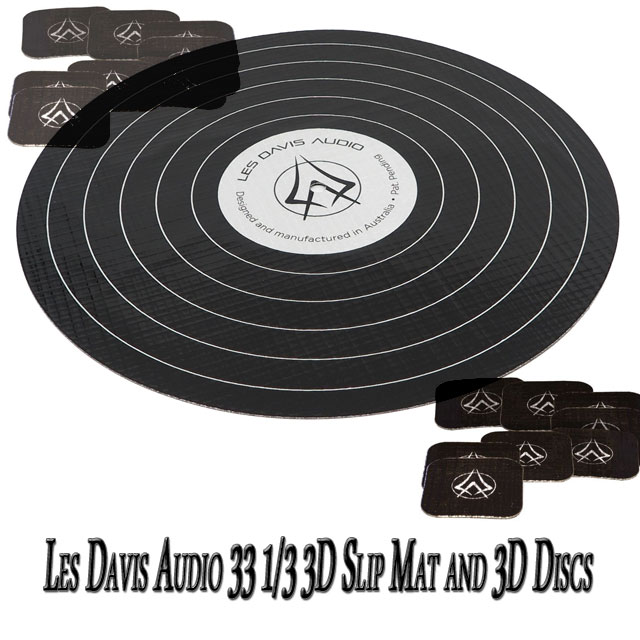
 I received the Les Davis 33 1/3D High-Performance Slip Mat, and two boxes of their 3D² Constrained Layer Damping discs (8 discs total) and set out to place them where suggested by the accompanying instructions – to place the discs under the feet of any components that generate and store mechanical and electrical energy (e.g., turntables, amplifiers, CD players, etc.). In my case, I placed them under the rubber feet of my modded Well-Tempered Turntable (LP Labs carbon fiber arm, Marigo Well Damped Clamp, upgraded black platter and spindle, and my original Ortofon MC-20 moving coil) as well as beneath its motor, under the PS Audio Gain Cello DAC and underneath the SBS S2 Pro power amplifier. The turntable sits on a tip-toed shelf that isolates from a Target T1 turntable shelf, securely mounted to our brick wall. At 118 pounds each, I assumed the Tekton Double Impacts too heavy (118 lbs.) for these wafer-thin discs.
I received the Les Davis 33 1/3D High-Performance Slip Mat, and two boxes of their 3D² Constrained Layer Damping discs (8 discs total) and set out to place them where suggested by the accompanying instructions – to place the discs under the feet of any components that generate and store mechanical and electrical energy (e.g., turntables, amplifiers, CD players, etc.). In my case, I placed them under the rubber feet of my modded Well-Tempered Turntable (LP Labs carbon fiber arm, Marigo Well Damped Clamp, upgraded black platter and spindle, and my original Ortofon MC-20 moving coil) as well as beneath its motor, under the PS Audio Gain Cello DAC and underneath the SBS S2 Pro power amplifier. The turntable sits on a tip-toed shelf that isolates from a Target T1 turntable shelf, securely mounted to our brick wall. At 118 pounds each, I assumed the Tekton Double Impacts too heavy (118 lbs.) for these wafer-thin discs.Designed and manufactured in Australia, the 33 1/3D Record Mat and The 3D² vibration control discs are but two of the products developed by Les Davis Audio to combat the potential waste of energy due to vibrations. To quote the manufacturer, these energy-wasting vibrations are “caused by the electrical and mechanical process they operate. In your home audio system, at every connection, from the power socket to CD player to the speaker, there is a gradual loss of energy and potential, which ultimately leads to a completely avoidable, inferior experience,” quoting from the Les Davis website.

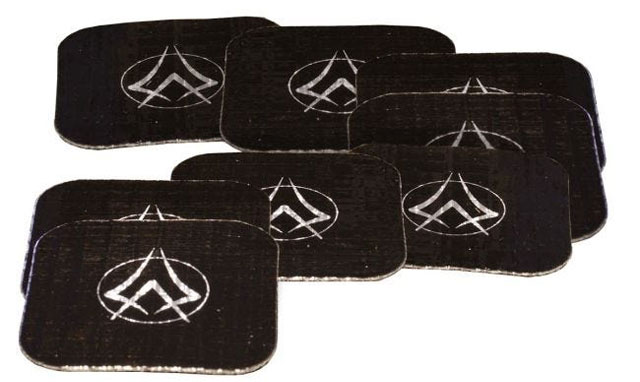


Constrained layer damping involves “a viscoelastic material (simply more flexible) pressed between two layers of a more sturdy material, which ultimately regulates the vibration output of the target component.” To maximize the potential of any electronic component, the folks at Les Davis currently offer the two products under review here: the 33 1/3D Record Mat and 3D² discs (for placement under the feet of energy-storing components); they also offer their Entropic Isolators – multi-layered feet for use beneath heavier speakers and components and the Vibrare Fermata, which removes noise from a power board or power strip. Paraphrasing Les Davis Audio, they describe these products as a reinforced soft aluminum compound as a damping layer, sandwiched between a premium polymeric laminate, the constraining layer. When undergoing mechanical vibrations generated by components, this structure moves laterally, converting vibration into low-level heat (what Les Davis Audio called the Shearing Effect), potentially offering improvements in any component’s performance.
Listening
 My Double Impacts sit offset in our large space, 8;-2” from tweeter to tweeter, with the left speaker, 7’-2” from the left wall, the right speaker 15 feet format he right wall, and both 51 inches out from our rear brick wall. The sweet spot on our angled couch is about 8’-2” from the speakers to my ears. I use the PS Audio Stellar Phono as my primary phono stage, coupled via XLR to a PS Audio Gain Cell DAC. As I’ve noted before, the Ortofon MC-20 is a challenge, with its minuscule .07mV output. Still, the Stellar Phono handles this challenge very well, providing a quiet and dynamic response from this decades-old former top of the line moving coil. I’m not using the record clamp for this session. With the Les Davis 33 1/3D High-Performance Slip Mat in place on the platter, I started spinning vinyl from Athena Productions’ 1991 analog reissue of Prokofiev’s “Alexander Nevsky Film Score” began this session. This performance was recorded for Vox/Turnabout on March 12, 1977, and was originally released as a quadraphonic LP. Doug Sax mastered the four-channel audio to two-channel stereo for Athena’s limited edition analog release. This record sounded wonderful, with its deep and wide stage so full of air and musical interplay. Modern-day composers have taken cues (and more) from a riveting performance like this – the themes and textures feel very familiar. The dynamic breathe presented is considerable. Though it felt a bit constrained now and again during this listen, this nuanced and layered tale unfolded wonderfully, as lush strings and horns, thoughtful percussion and voices, both by choir and solo, swept this lovely score to these ears. I have heard it presented with more excellent dynamic contrast, but the emotion and delicacy here were on par with some of my best home efforts.
My Double Impacts sit offset in our large space, 8;-2” from tweeter to tweeter, with the left speaker, 7’-2” from the left wall, the right speaker 15 feet format he right wall, and both 51 inches out from our rear brick wall. The sweet spot on our angled couch is about 8’-2” from the speakers to my ears. I use the PS Audio Stellar Phono as my primary phono stage, coupled via XLR to a PS Audio Gain Cell DAC. As I’ve noted before, the Ortofon MC-20 is a challenge, with its minuscule .07mV output. Still, the Stellar Phono handles this challenge very well, providing a quiet and dynamic response from this decades-old former top of the line moving coil. I’m not using the record clamp for this session. With the Les Davis 33 1/3D High-Performance Slip Mat in place on the platter, I started spinning vinyl from Athena Productions’ 1991 analog reissue of Prokofiev’s “Alexander Nevsky Film Score” began this session. This performance was recorded for Vox/Turnabout on March 12, 1977, and was originally released as a quadraphonic LP. Doug Sax mastered the four-channel audio to two-channel stereo for Athena’s limited edition analog release. This record sounded wonderful, with its deep and wide stage so full of air and musical interplay. Modern-day composers have taken cues (and more) from a riveting performance like this – the themes and textures feel very familiar. The dynamic breathe presented is considerable. Though it felt a bit constrained now and again during this listen, this nuanced and layered tale unfolded wonderfully, as lush strings and horns, thoughtful percussion and voices, both by choir and solo, swept this lovely score to these ears. I have heard it presented with more excellent dynamic contrast, but the emotion and delicacy here were on par with some of my best home efforts. 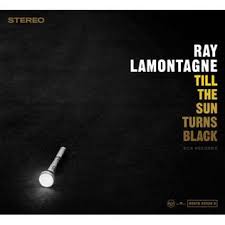 “Be Here Now,” the opening track on Ray LaMontagne’s “Until The Sun Turns Black” (RCA/Legacy 2006) is always a pleasure to hear, and with these new additions, it was presented with great depth and focus that was, as always, impressive. After all, the record jacket is labeled as having “HIFI Sound,” and that’s no bull! With “Empty,” the next track, the new additions showed me something coming from greater depth to clarity… while the foreground strumming the guitar and lead vocal were demanding of attention, the rear of stage info came to life. On the left, the strummed second acoustic guitar was more evident and farther back than experience before using this new mat and discs. The lead vocal pushed outside the right speaker, a phenomenon in sound I’ve noted from time to time in these pages. I spent ten days playing turntables with just the new mat, discerning what changes it brought without any direct comparison to other mats. With the Les Davis Slip Mat, the music seemed more relaxed and a touch more immersive, prompting me to lean in closer as the music played on. The presentation appeared more dimensional, the stage both broader and deeper, with nuances more apparent.
“Be Here Now,” the opening track on Ray LaMontagne’s “Until The Sun Turns Black” (RCA/Legacy 2006) is always a pleasure to hear, and with these new additions, it was presented with great depth and focus that was, as always, impressive. After all, the record jacket is labeled as having “HIFI Sound,” and that’s no bull! With “Empty,” the next track, the new additions showed me something coming from greater depth to clarity… while the foreground strumming the guitar and lead vocal were demanding of attention, the rear of stage info came to life. On the left, the strummed second acoustic guitar was more evident and farther back than experience before using this new mat and discs. The lead vocal pushed outside the right speaker, a phenomenon in sound I’ve noted from time to time in these pages. I spent ten days playing turntables with just the new mat, discerning what changes it brought without any direct comparison to other mats. With the Les Davis Slip Mat, the music seemed more relaxed and a touch more immersive, prompting me to lean in closer as the music played on. The presentation appeared more dimensional, the stage both broader and deeper, with nuances more apparent. I’ve followed Kandace Springs’ rise through her first few projects and, with her most recent release, Ms. Springs has realized her first true Jazz album, “The Women Who Raised Me” (Blue Note 2020), lives and breathes her heart and soul, celebrating songs from the great female vocalists that influenced her life. Backed with star talent – Christian McBride (bass), David Sanborn (alto sax), Chris Potter (sax), Avishai Cohen (trumpet), Elena Pinderhughes (flute), and Norah Jones offering vocal talent, this double album comes to the ear as a labor of love. Indeed. “Devil May Care” begins the first side with beautiful walking bass and a casual, laid-back presentation; it’s the perfect first track of this collection of beautiful songs. Springs’s voice is warm and lush, and the backing musicians are tight and very well-rehearsed. In the next track, “Angel Eyes,” the languishing slow pace accents Springs’ ease, as she delivers a beautiful, warm, and classy vocal with skill and feeling. The bass, drum, and piano accompaniment was relaxed, with Norah Jone’s supportive backing vocal blending quite well with Springs’ own. On “I Put A Spell On You,” Springs’ sultry song is accompanied skillfully by David Sanborn on alto sax, his horn responses of equal intensity to Kandace’s gritty vocal lines. Swopping between mats a few times while playing the same records revealed the 33 1/3D Slip Mat strengths. As Springs’ rendition of “Pearls” played on the idler, a stage of greater depth and packed with more air around the musicians washed over me, as Avishai Cohen’s trumpet floated over the relaxed and spacious accompaniment. The music was better delineated and more freed from constraints with the Slip Mat, yielding more heft and more grip, as each note bloomed a bit more thoroughly with less effort.
I’ve followed Kandace Springs’ rise through her first few projects and, with her most recent release, Ms. Springs has realized her first true Jazz album, “The Women Who Raised Me” (Blue Note 2020), lives and breathes her heart and soul, celebrating songs from the great female vocalists that influenced her life. Backed with star talent – Christian McBride (bass), David Sanborn (alto sax), Chris Potter (sax), Avishai Cohen (trumpet), Elena Pinderhughes (flute), and Norah Jones offering vocal talent, this double album comes to the ear as a labor of love. Indeed. “Devil May Care” begins the first side with beautiful walking bass and a casual, laid-back presentation; it’s the perfect first track of this collection of beautiful songs. Springs’s voice is warm and lush, and the backing musicians are tight and very well-rehearsed. In the next track, “Angel Eyes,” the languishing slow pace accents Springs’ ease, as she delivers a beautiful, warm, and classy vocal with skill and feeling. The bass, drum, and piano accompaniment was relaxed, with Norah Jone’s supportive backing vocal blending quite well with Springs’ own. On “I Put A Spell On You,” Springs’ sultry song is accompanied skillfully by David Sanborn on alto sax, his horn responses of equal intensity to Kandace’s gritty vocal lines. Swopping between mats a few times while playing the same records revealed the 33 1/3D Slip Mat strengths. As Springs’ rendition of “Pearls” played on the idler, a stage of greater depth and packed with more air around the musicians washed over me, as Avishai Cohen’s trumpet floated over the relaxed and spacious accompaniment. The music was better delineated and more freed from constraints with the Slip Mat, yielding more heft and more grip, as each note bloomed a bit more thoroughly with less effort.For the first time since the shelter-in-place, I managed to get Clement to drop over, an excellent treat for the dogs. Dudley’s favorite human, Clement, responded with belly rubs and affection, as they both sat in the sweet spot as Dudley stole every bit of attention our visitor offered.
Having two tables helps… switching between the tables, and alternating mats delivered noticeable results. When I removed the Les Davis mat from the Well-Tempered and replaced it with a Herbie’s Audio Lab Way Excellent II turntable mat, Clement’s ears perked up, and he asked me to repeat the mat switch, playing the same excerpt with each. To quote Clement, the Les Davis 33 1/3D, High-Performance Slip Mat “lifted the music,” providing a cushion of air beneath the instruments and vocals and adding verticality to the stage. With Herbie’s mat, things were less distinct and, well, boring in comparison. The Slip Mat occasionally lifted with a record here and there, statically attracted to the charged vinyl – some labels were more than others.
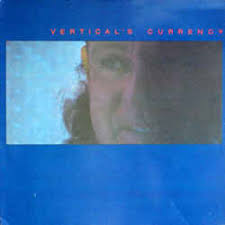 A play of Kip Hanrahan’s “Verticals Currency” (American Clavé 1985) responded with a bit more air and space as well, when the Slip Mat was deployed. Bass that had been bloated with the Herbie mat was replaced with better defined low-frequency lines on a stage that was deeper, wider, and taller as the music floated on a cloud, as though a weight that tethered the band had been removed. The idler setup currently doesn’t allow me to add the 3D(2) Constrained layer Damping discs under its platform at present, but the improvements brought by the platter mat were present there as well.
A play of Kip Hanrahan’s “Verticals Currency” (American Clavé 1985) responded with a bit more air and space as well, when the Slip Mat was deployed. Bass that had been bloated with the Herbie mat was replaced with better defined low-frequency lines on a stage that was deeper, wider, and taller as the music floated on a cloud, as though a weight that tethered the band had been removed. The idler setup currently doesn’t allow me to add the 3D(2) Constrained layer Damping discs under its platform at present, but the improvements brought by the platter mat were present there as well.A play of Carolyn Leonhart’s “New8thDay” (Sunnyside 2005), digits rendered by the Memory Player Mini, brought into focus attributes brought by the 3D² Constrained layer Damping discs into focus. Various songs from the album exposed added clarity and better delineated transient edge to percussion, with added air beneath and between the instrumentation, on a touch deeper stage.
Gregg August’s “Dialogues On Race Volume 1” (Iacuessa Records 2020), a large-ensemble tour de force, further illuminated the virtues of the 3D² Constrained layer Damping discs. This large assemblage of instrumentation seemed to explode into the room, with added verve and less constraint and with a bit more pronounced intent, timing, and drive.
The Wrap
The Les Davis 33 1/3D High-Performance Slip Mat and 3D Constrained Layer Damping discs offer subtle but noticeable improvements. They each delivered added air beneath and between the instrumentation, increased clarity on the soundstage, and a defined edge to transients and low-frequency information. Of the two products, I think the Slip Mat produced the most apparent improvements on my tables. Still, the 3D(2) Constrained Layer Damping Discs also contributed their share of isolation and improved resolution.


greg voth

 Clement Perry (CP), knows I’m quite the vinyl junkie, and I like to tweak, so he offered me the chance to try out this platter mat and jot down some thoughts. I have to admit upfront that I haven’t played with a MAT in quite some time (Probably not since the last time I fooled around with the Platter Matter that I had for many years). I stopped using it about ten years ago, once I made a significant upgrade to my turntable. Eventually, curiosity got the best of me, and I had to re-try it since my system had improved dramatically from years earlier).
Clement Perry (CP), knows I’m quite the vinyl junkie, and I like to tweak, so he offered me the chance to try out this platter mat and jot down some thoughts. I have to admit upfront that I haven’t played with a MAT in quite some time (Probably not since the last time I fooled around with the Platter Matter that I had for many years). I stopped using it about ten years ago, once I made a significant upgrade to my turntable. Eventually, curiosity got the best of me, and I had to re-try it since my system had improved dramatically from years earlier). At the time, I upgraded from a VPI HW-19 MK2 with a Well-Tempered Classic arm and a Benz Glider cartridge to a VPI Super Scoutmaster with a Super Platter. Along with a VPI HRX record weight and VPI platter ring and an SDS speed controller, along with a Well-Tempered Reference arm with a Benz HO Ruby 3. The use of the Platter Matter was short-lived because whatever it was doing was getting in the way of all the synergy that was happening with all the new components. Then, for a while, no more turntable tweaks until I decided to give the Maple Shade system a spin. That experiment was a little longer-lived, but it could not offer a consistent improvement over what I was used to, although it did have an impressive set of abilities. Although not super well-known, it seems to get excellent word-of-mouth from the right places, and I think it may very well have been a home run in a different system than mine.
 After that, I probably played with about a dozen different record weights, but no cigar. They could all subtly change the sound, but nothing did enough to excite a need to change up from all VPI ways. So, there you go, although I am not a novice to tweaking my turntable, I certainly can’t fake any significant experience in this mat area. Therefore, you should calibrate any opinion of mine accordingly. With that said, let me proclaim with regard to the Les Davis Audio 33 1/3 3D mat – I LOVE THIS THING!!
After that, I probably played with about a dozen different record weights, but no cigar. They could all subtly change the sound, but nothing did enough to excite a need to change up from all VPI ways. So, there you go, although I am not a novice to tweaking my turntable, I certainly can’t fake any significant experience in this mat area. Therefore, you should calibrate any opinion of mine accordingly. With that said, let me proclaim with regard to the Les Davis Audio 33 1/3 3D mat – I LOVE THIS THING!!I lived with it for a couple of intense weeks of trying many different records. I gave it every chance to shine by manipulating all the user variables at my disposal on my Well-Tempered Arm. VTA, damping, azimuth, and anti-skating. No, none of this was necessary to make the mat work but, if you have any of these tools at your disposal, it will allow the mat to offer you an even more comprehensive range of impacts. CP just wanted a quick thumbnail sketch, so I am not going to elaborate at great length, but what turned me on as its greatest strength was that it somehow could take individual images across the soundstage and make them tonally more prosperous and more relaxed, without truncating detail. But, I especially appreciated that those images all seemed to be more three-dimensionally fleshed out.
I can’t say for sure that it would be for you, but for me, this has to be the best bang for the buck that I’ve played with in a long time!

ed van winkle

ed van winkle
Specifications:
Les Davis 33 1/3D High-Performance Slip Mat US $175.00
Les Davis Audio 3D Constrained Layer Damping Discs US $125 per box (treats two components)
Contact:US Importer
United States of America
Bespoke Audio Group
Contact: Tyson Montoya
Stereo Times Masthead
Publisher/Founder
Clement Perry
Editor
Dave Thomas
Senior Editors
Frank Alles, Mike Girardi, Key Kim, Russell Lichter, Terry London, Moreno Mitchell, Paul Szabady, Bill Wells, Mike Wright, Stephen Yan, and Rob Dockery
Current Contributors
David Abramson, Tim Barrall, Dave Allison, Ron Cook, Lewis Dardick, Dan Secula, Don Shaulis, Greg Simmons, Eric Teh, Greg Voth, Richard Willie, Ed Van Winkle, and Rob Dockery
Music Reviewers:
Carlos Sanchez, John Jonczyk, John Sprung and Russell Lichter
Site Management Clement Perry
Ad Designer: Martin Perry


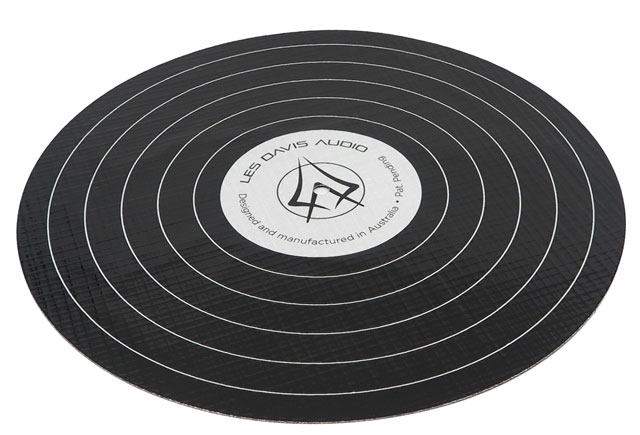




Be the first to comment on: Les Davis 33 1/3 3D High-Performance Slip Mat and 3D Discs by Greg Voth and Ed Van Winkle